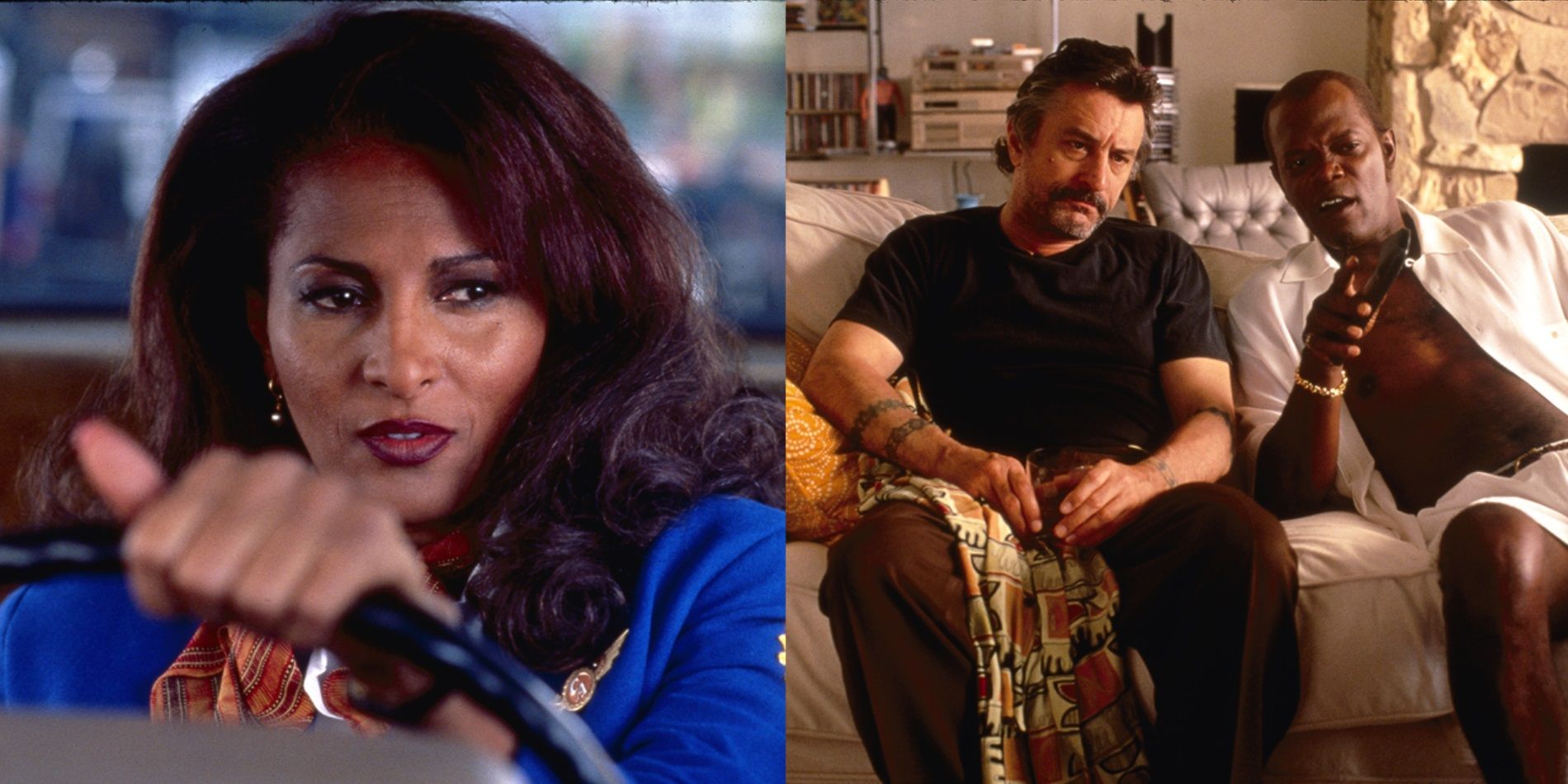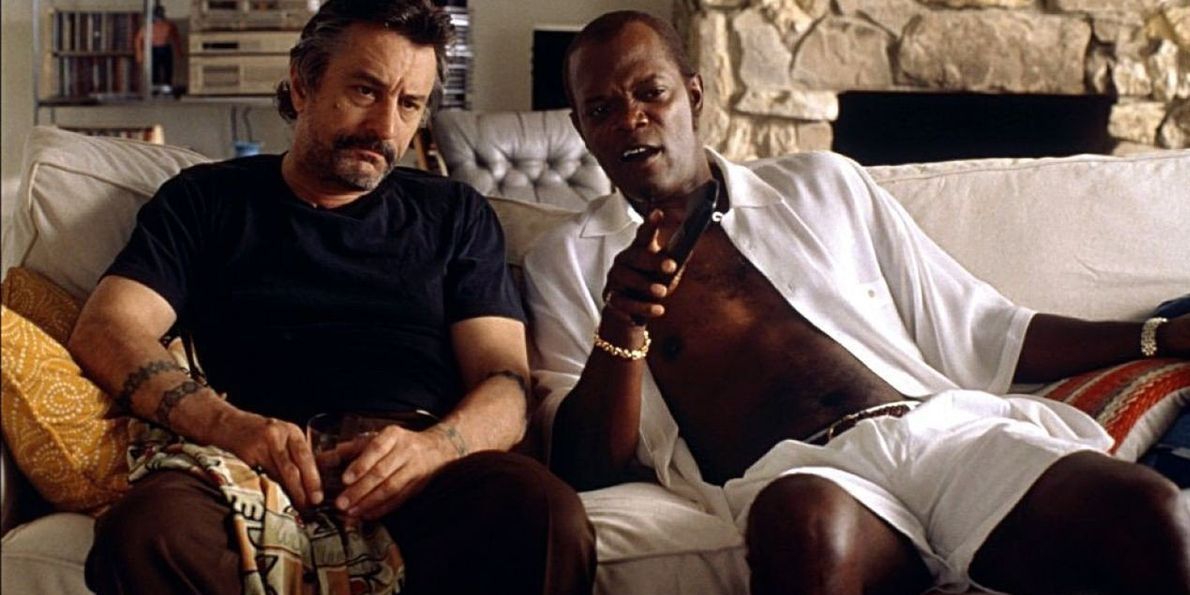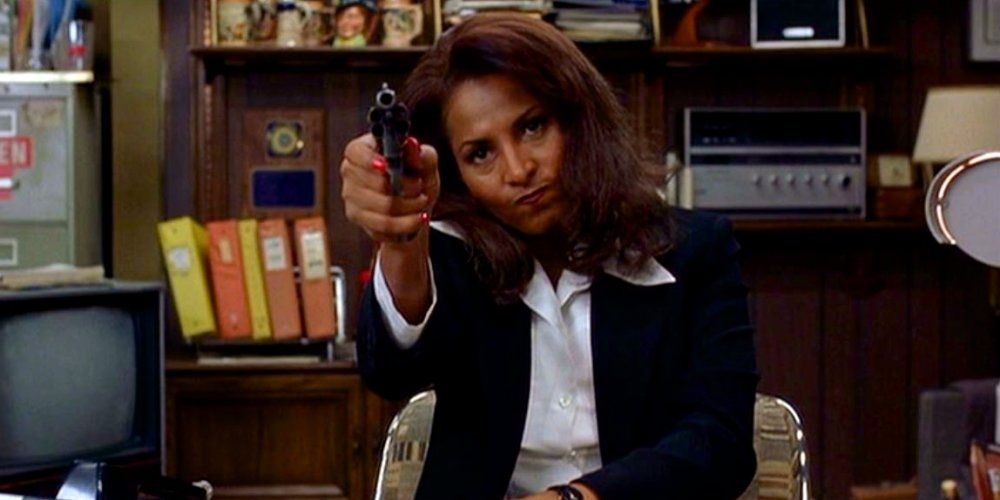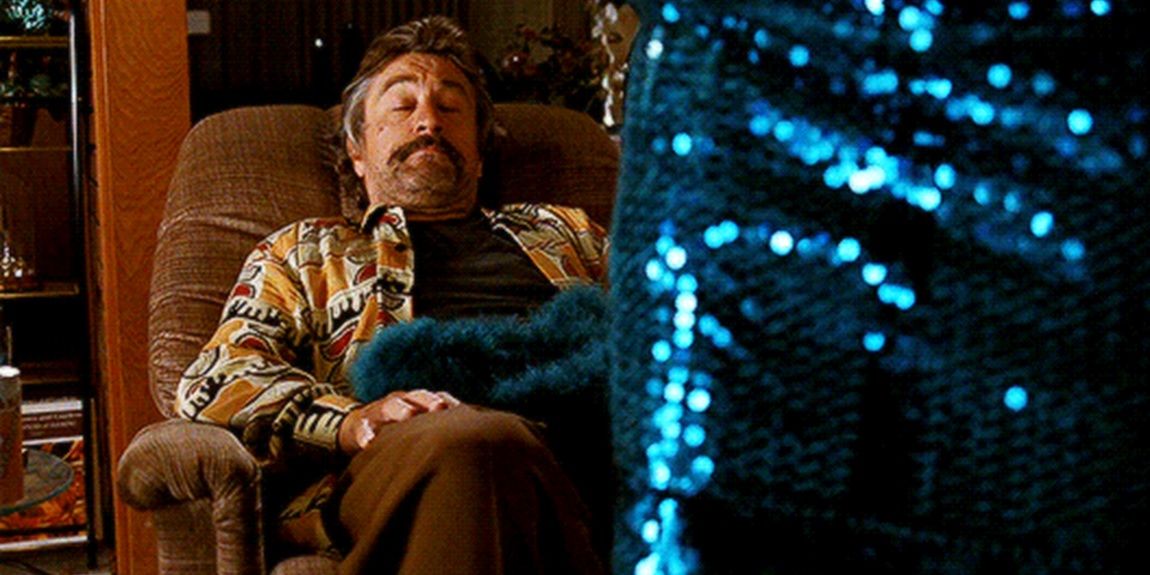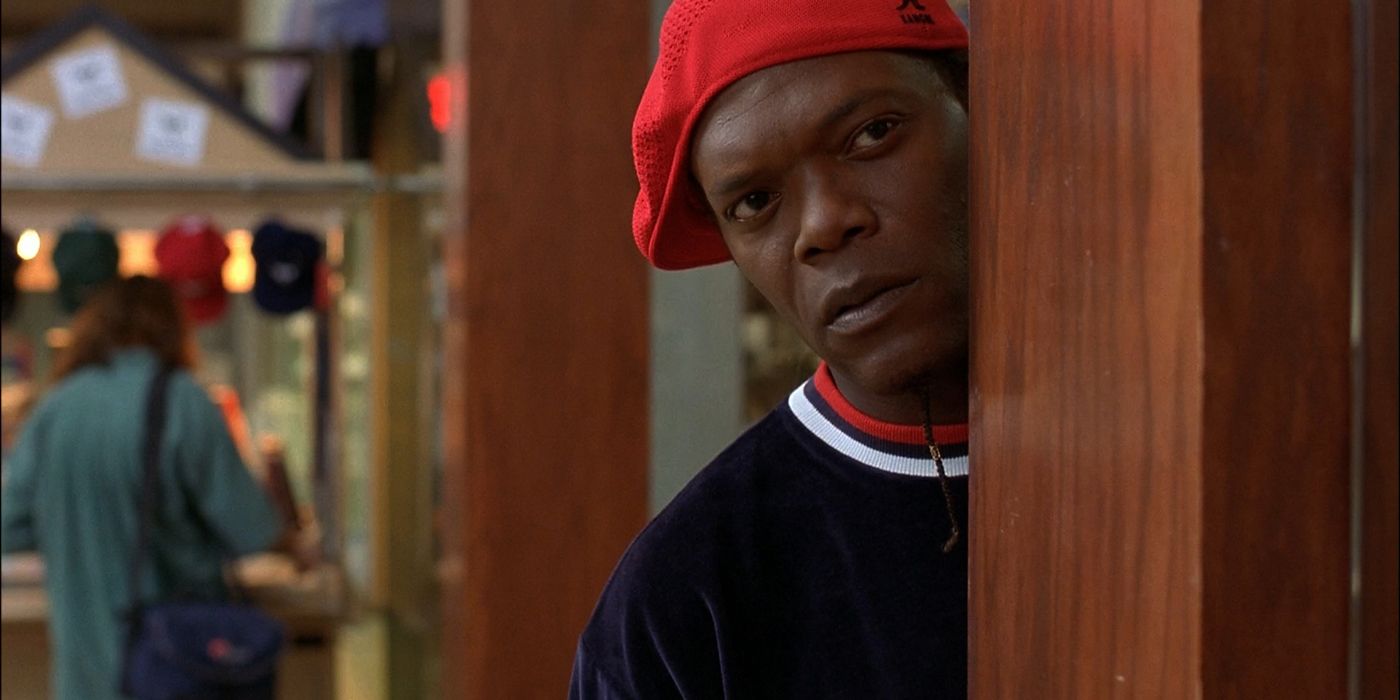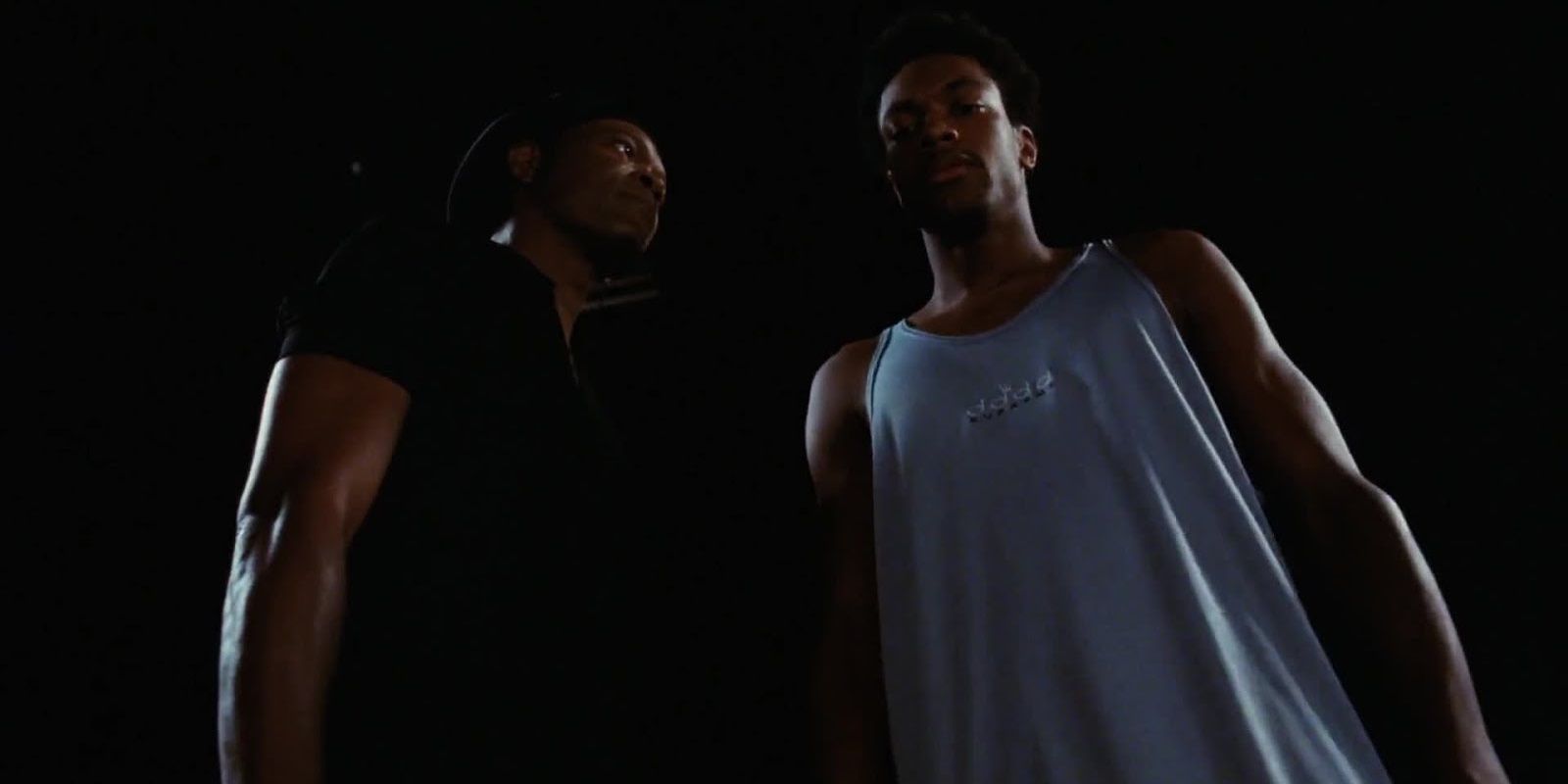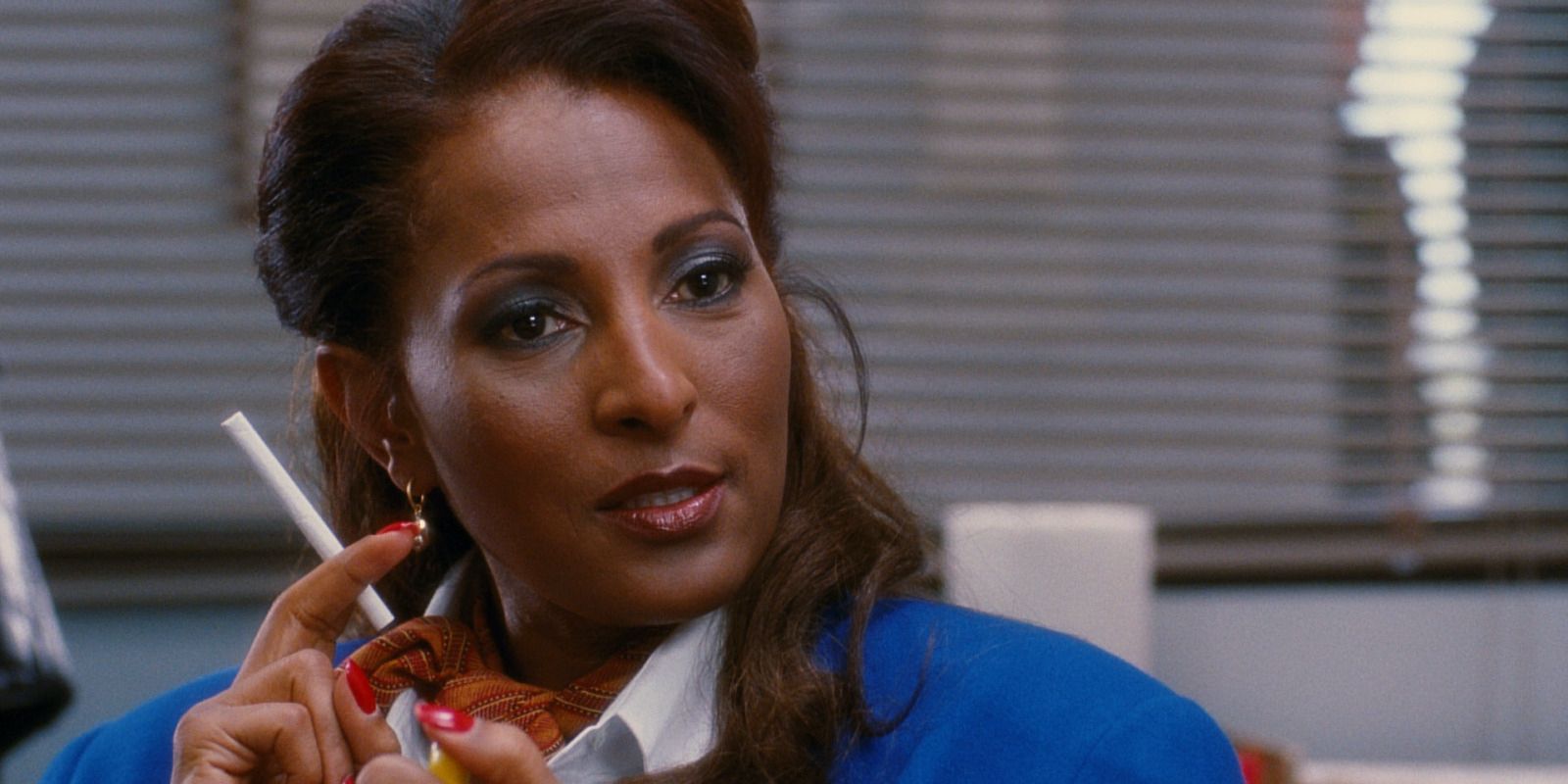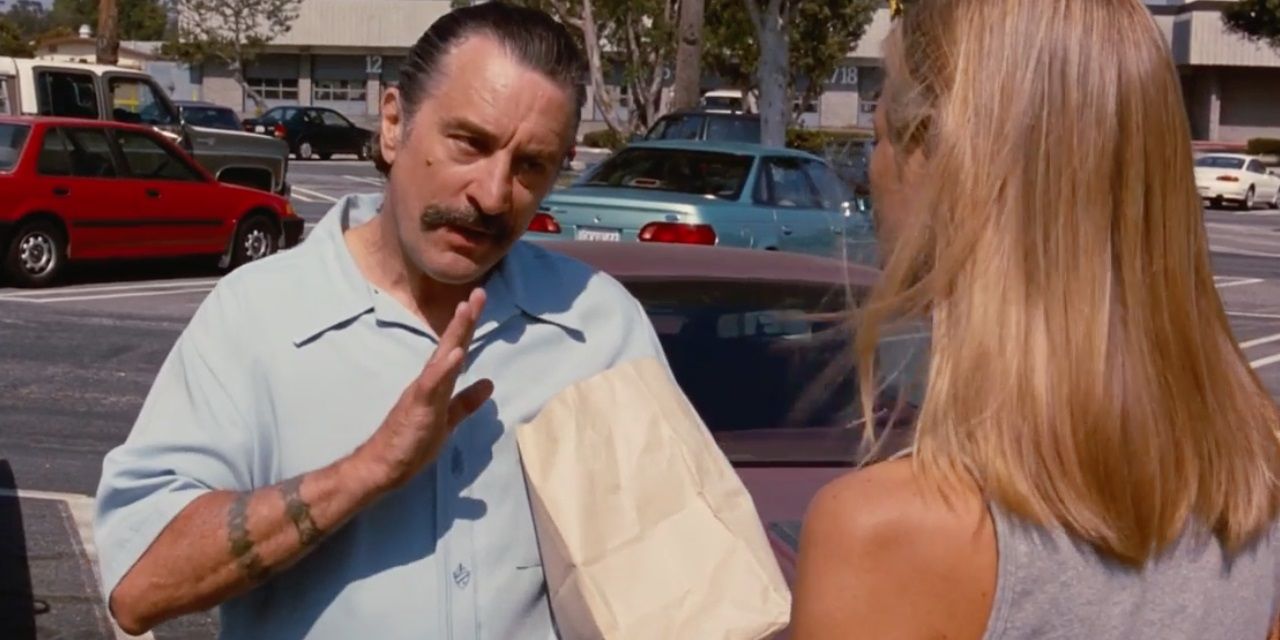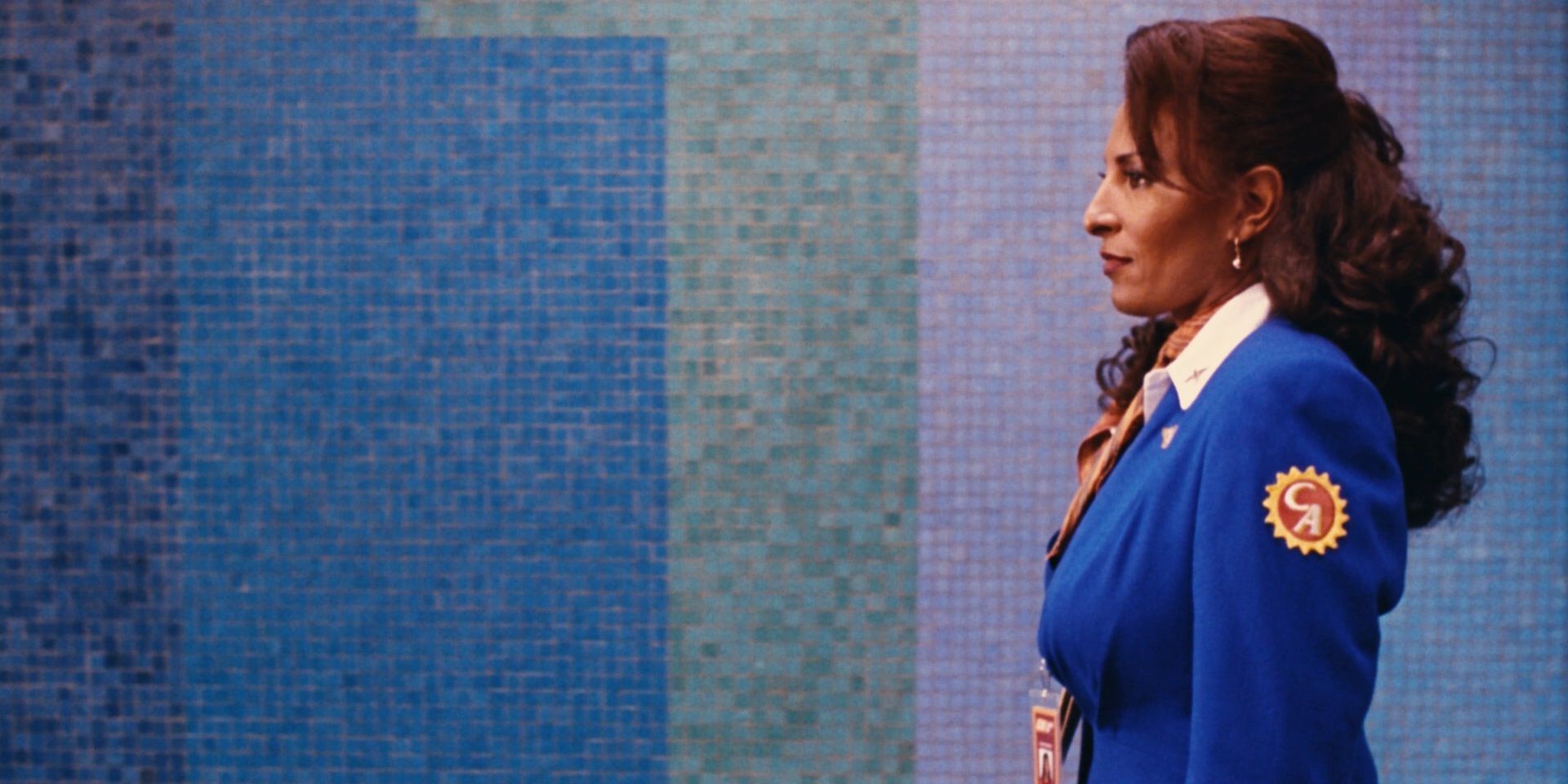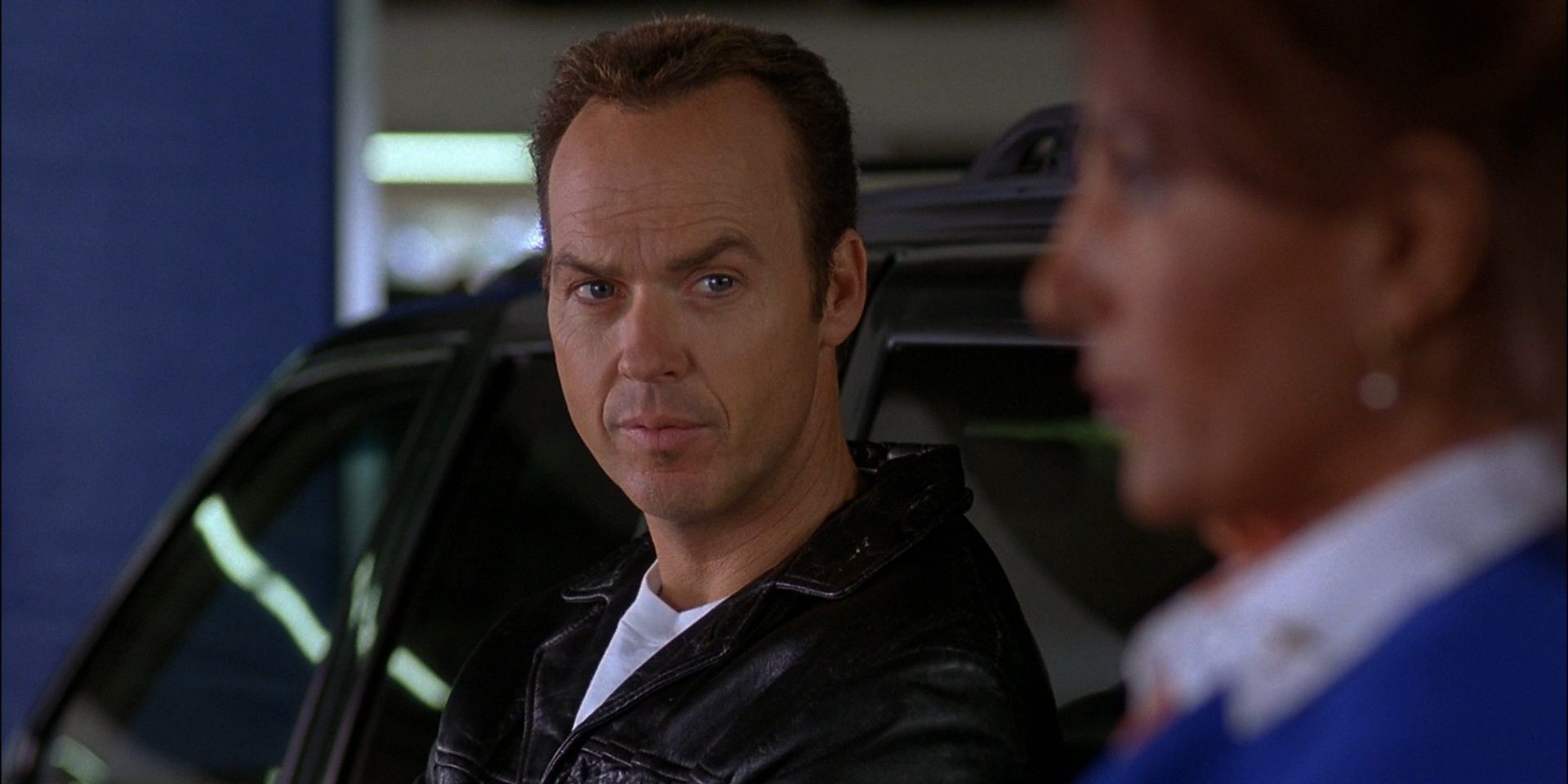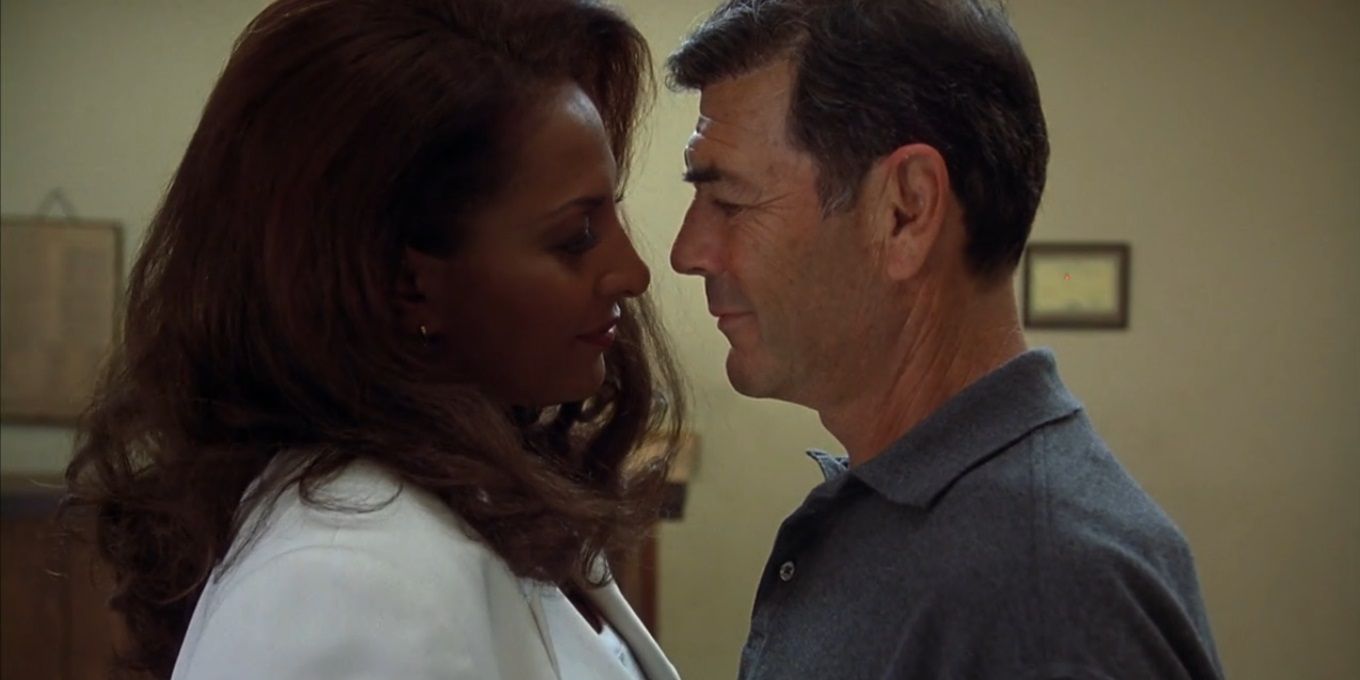After the overwhelming blockbuster success of his second movie, Pulp Fiction, Quentin Tarantino made the wise decision not to try to top the mayhem and spectacle of his Palme d’Or-winning magnum opus with his third feature. Tarantino’s next film instead went the other way, exploring a more mature, less violence-driven tone. Jackie Brown is the iconic filmmaker’s first (and, so far, only) adaptation of another writer’s work.
Based on Elmore Leonard’s Rum Punch, Jackie Brown is tonally and aesthetically very different than Tarantino’s other movies. It doesn’t take place in the familiar Tarantino universe; it’s set in Leonard’s literary universe. But it still exhibits plenty of Q.T.’s stylistic trademarks.
Idiosyncratic Dialogue
Tarantino is known for including extended dialogue scenes in his movies. Even the more action-driven ones like Kill Bill and Django Unchained have long conversations exhibiting the idiosyncrasies of Tarantino’s writing.
There’s plenty of Tarantino’s idiosyncratic dialogue in Jackie Brown. Jackie and Max discuss the Delfonics. Ordell regales Louis with the differences between various assault rifles. Jackie Brown is the closest thing that Tarantino has made to a hangout movie, so these conversations take the spotlight.
Throwback To Old Genres
Like his previous two movies, Tarantino’s third feature is a crime film. But, like the rest of Q.T.’s filmography, it’s also a throwback to an old-school genre that’s gone out of style. Whereas Pulp Fiction was a spaghetti western pushed through the lens of a contemporary crime thriller, Jackie Brown is a blaxploitation movie pushed through the lens of a contemporary crime thriller.
It might not be as ambitious as some of Tarantino’s other genre cocktails – like Kill Bill’s blend of spaghetti western, blaxploitation, and martial arts actioner – but the blaxploitation influence was a great way for Tarantino to differentiate his adaptation from Leonard’s source material.
Needle-Drops On The Soundtrack
Like the rest of his movies (except for The Hateful Eight), Tarantino forgoes an original score in Jackie Brown and instead drops the needle on classic songs from his record collection to provide each scene with musical accompaniment.
Bobby Womack’s “Across 110th Street” opens and closes the movie. Randy Crawford’s “Street Life” plays over Jackie driving to the “for real” money exchange. Jackie plays the Delfonics’ “Didn’t I Blow Your Mind This Time” on her record player when Max comes over to her place.
Samuel L. Jackson
There are many actors who can deftly deliver the dialogue of Quentin Tarantino – Uma Thurman, Christoph Waltz, Harvey Keitel, the list goes on – but arguably the actor who delivers it the best is Samuel L. Jackson. Jackson’s rich, booming voice and Tarantino’s verbose, poetic monologues were a match made in heaven.
Jackson’s ongoing collaboration with Tarantino started with the role of Jules Winnfield in Pulp Fiction. The two reunited for Jackie Brown and Jackson went on to have cameo appearances in Kill Bill and Inglourious Basterds and major roles in Django Unchained and The Hateful Eight.
Trunk Shot
If one of Tarantino’s characters goes into the trunk of a car, the director shoots the scene from inside the trunk. This can be seen when Mr. Blonde shows off his kidnapped cop in Reservoir Dogs, when Jules and Vincent pick up their guns in Pulp Fiction, and when the Bride talks to Sofie Fatale at the end of Kill Bill: Volume 1.
There’s a trunk shot in Jackie Brown in which Ordell tries to convince Beaumont to willingly hide in the trunk of his car. Beaumont is naturally skeptical and, as it turns out, he has every right to be, because it’s all an elaborate ruse to allow Ordell to kill him discreetly.
Fictional Product Placement
Instead of giving airtime to real corporations, Tarantino fills his movies with fake product placement. The thieves listen to the K-Billy radio station in Reservoir Dogs and Jules samples a meal from Big Kahuna Burger in Pulp Fiction.
Jackie Brown features a couple of fictional Tarantino-verse brands, like the airline Cabo Air and the Japanese fast food/coffee chain Teriyaki Donut, seen briefly in Pulp Fiction before being featured more prominently in Jackie Brown.
Dark Comedy
Tarantino likes to make his audience laugh at things they shouldn’t laugh at, like an accidental gunshot to the face in Pulp Fiction or the plucking of an eyeball in Kill Bill: Volume 2.
In Jackie Brown, Tarantino wrings a dark laugh out of Louis Gara’s casual attitude after killing Melanie. He shoots her in a parking lot in the midst of a heated debate about where he parked the car. Right after killing her, he finds the car and says to himself, “See? Just where I said it was.”
Homages To Classic Movies
As original as Tarantino’s films are, they’re full of overt homages to existing movies. Reservoir Dogs’ ear-cutting sequence is a reference to Sergio Corbucci’s Django and Pulp Fiction’s Ezekiel 25:17 speech is taken from a Sonny Chiba martial arts movie.
Jackie Brown homages classic cinema from its opening shot, taken from The Graduate. Ordell makes a reference to Chow Yun-fat’s gun-toting antihero from The Killer and Bridget Fonda’s “Wanna f**k?” line is a nod to Shampoo.
Armed Standoff
A lot of Tarantino’s movies culminate in a tense armed standoff. The thieves all point guns at each other at the end of Reservoir Dogs. Jules and Vincent point guns at Pumpkin and Honey Bunny at the end of Pulp Fiction. The titular octet turns their guns on each other at the end of The Hateful Eight.
The armed standoff at the end of Jackie Brown has less pulpy spaghetti western-esque flash and more sobering realism than those other climactic face-offs. Jackie plays the ATF agents and the gun runners against each other and comes out on top.
Giving Fading Movie Stars A Much-Needed Comeback
Tarantino always casts the right actor for each role, but he’s also been known to revive the careers of fading A-listers. This trend began when he gave John Travolta a much-needed comeback with the role of Vincent Vega in Pulp Fiction.
Jackie Brown revitalized the careers of not one, but two Hollywood icons: blaxploitation legend Pam Grier, who plays the titular flight attendant-turned-criminal mastermind, and Robert Forster, who earned an Oscar nod for his turn as Max Cherry.

